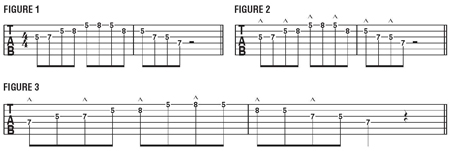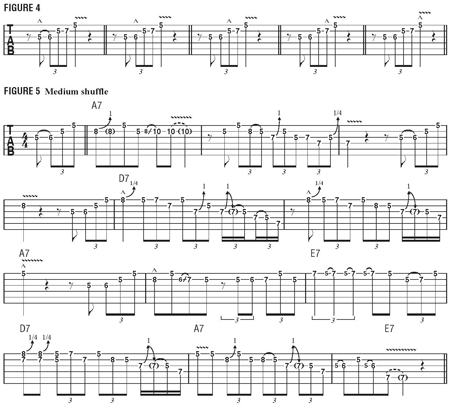Talkin' Blues: Accented Speech

Emphasizing certain notes to make your licks come to life.
The fundamental elements of a blues phrase—or any musical phrase, for that matter—are melody, rhythm and articulation (also known as touch). On the guitar, touch is a product of both hands—the fret hand executes techniques like string bending and hammer-ons, while the pick hand is primarily responsible for expressing dynamics, which encompass volume, intensity and tone.
To understand the importance of dynamics, consider how they influence our perception of the spoken word. A prime example is Dr. Martin Luther King Jr.’s “I Have a Dream” speech. After hearing it once, you may not be able to quote much more than those four words, but you can’t forget the dynamic intensity of the delivery. Now imagine the speech delivered by text-to-voice software. The words are the same, but they don’t stick. Dynamics have the same effect on music, and if you don’t manage them, a significant part of your message may be lost.

The first step in our exploration of dynamics is to pluck a familiar minor pentatonic scale pattern with your bare thumb and finger, as shown in FIGURE 1. An uneven attack creates dynamic variation, but with random results. Now play the scale again, this time focusing on control. Sound the first note by brushing the string with the side of your thumb, then attack the next note by hooking one of your pick-hand fingers under the string and snapping it back against the fretboard (FIGURE 2). Repeat the exercise using the opposite dynamic pattern (FIGURE 3). Now use your pick—you can still create dynamic contrast, but you also give up that breathy, barely-there brush and aggressive snap. The unique quality of bare fingers is why influential players like Albert King and Albert Collins opted for the no-pick approach, though hybrid picking—using a flatpick in tandem with the fingers—offers a compromise. Play the pattern again, alternating flatpick and bare finger for the best of both worlds.

FIGURE 4 illustrates the effect that shifting dynamics can have on a classic blues riff, akin to changing the emphasis in a sentence (e.g. What are you looking at? What are you looking at?). FIGURE 5 illustrates a solo played over a medium-tempo shuffle feel and built around varying dynamics. The first four bars are played softly, bars 5–8 with a bit more power and bars 9–12 with a hard attack. Play with a clean tone to hear the dynamic detail, as distortion also adds compression, which limits your dynamic range.
Get The Pick Newsletter
All the latest guitar news, interviews, lessons, reviews, deals and more, direct to your inbox!
“There are so many sounds to be discovered when you get away from using a pick”: Jared James Nichols shows you how to add “snap, crackle and pop” to your playing with banjo rolls and string snaps
Don't let chord inversions bamboozle you. It's simply the case of shuffling the notes around







![Joe Bonamassa [left] wears a deep blue suit and polka-dotted shirt and plays his green refin Strat; the late Irish blues legend Rory Gallagher [right] screams and inflicts some punishment on his heavily worn number one Stratocaster.](https://cdn.mos.cms.futurecdn.net/cw28h7UBcTVfTLs7p7eiLe.jpg)


